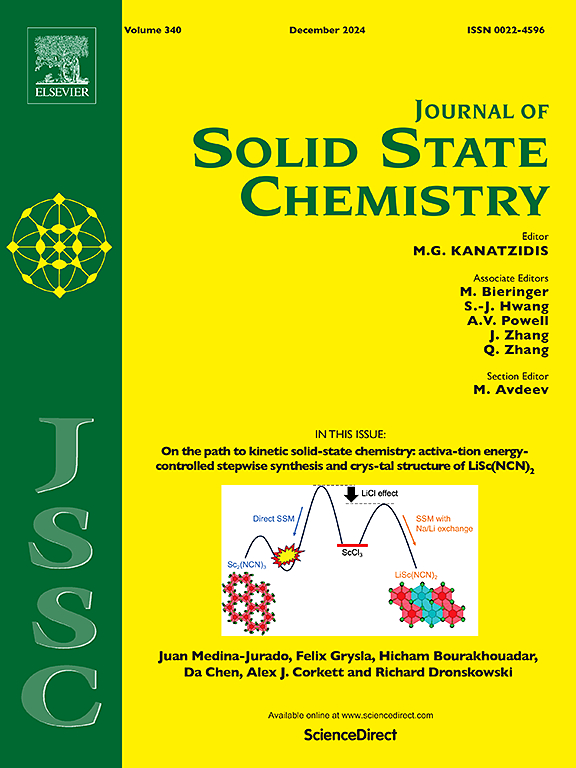掺杂变价金属的过渡金属氧化物促进了高氯酸铵的连续高效分解
IF 3.2
3区 化学
Q2 CHEMISTRY, INORGANIC & NUCLEAR
引用次数: 0
摘要
高氯酸铵(AP)是目前固体推进剂中应用最广泛的氧化剂之一,但由于高氯酸铵的两段分解,其分解过程中的能量释放不集中是一个很大的挑战。为了解决这一挑战,我们设计了一种策略,即由杂原子掺杂(Fe, Ce)催化剂产生的缺陷诱导电子转移以促进AP的连续分解。由于缺陷的存在,产生催化活性位点,与NH3形成路易斯酸碱对,使NH3迅速离开反应物表面,导致高温分解峰消失。由于Ce独特的氧导功能,掺Ce的金属氧化物一般优于掺Fe的金属氧化物。以催化效果最好的Co3O4@Ce和Co3O4@Fe为例。AP的分解温度分别降至300.16℃和340.28℃,AP分解活化能分别降至114.49 kJ/mol和150.33 kJ/mol,证实Ce具有较好的催化效率。此外,由于CeO2的富氧作用,AP倾向于在Co3O4的晶面上深度解离。产物分析表明,在Co和Ce的协同作用下,AP分解产生的NHx被迅速氧化,同时产生更多的O2。因此,掺杂原子构建富缺陷催化剂的策略在AP催化中具有很大的应用前景。本文章由计算机程序翻译,如有差异,请以英文原文为准。
Transition metal oxide doped with variable valence metal promote the continuous and efficient decomposition of ammonium perchlorate
Although ammonium perchlorate (AP) is now one of the most widely used oxidants in solid propellants, it is a great challenge that the energy release is not concentrated during the decomposition of AP due to the two-stage decomposition. In order to address this challenge, we designed a strategy that defects generated by heteroatom-doped (Fe, Ce) catalysts induce electron transfer to promote AP continuous decomposition. Due to the presence of defects, the catalytic active site is generated, which forms a Lewis acid-base pair with NH3, causing NH3 to leave the surface of the reactant rapidly, resulting in the disappearance of the high-temperature decomposition peak. Due to the unique oxygen conduction function of Ce, metal oxides doped with Ce are generally superior to those doped with Fe. Take Co3O4@Ce and Co3O4@Fe, which have the best catalytic effects, as examples. The decomposition temperatures of AP were reduced to 300.16 °C and 340.28 °C respectively, and the activation energies of AP decomposition were reduced to 114.49 kJ/mol and 150.33 kJ/mol respectively, which confirmed that Ce has better catalytic efficiency. In addition, given the oxygen enrichment effect of CeO2, AP tended to dissociate deeply on the crystal plane of Co3O4. The product analysis showed that NHx produced by AP decomposition was oxidized rapidly under the synergistic action of Co and Ce, and more O2 was produced at the same time. As a result, the strategy of constructing defect-rich catalysts by doping atoms has great application prospects in AP catalysis.
求助全文
通过发布文献求助,成功后即可免费获取论文全文。
去求助
来源期刊

Journal of Solid State Chemistry
化学-无机化学与核化学
CiteScore
6.00
自引率
9.10%
发文量
848
审稿时长
25 days
期刊介绍:
Covering major developments in the field of solid state chemistry and related areas such as ceramics and amorphous materials, the Journal of Solid State Chemistry features studies of chemical, structural, thermodynamic, electronic, magnetic, and optical properties and processes in solids.
 求助内容:
求助内容: 应助结果提醒方式:
应助结果提醒方式:


